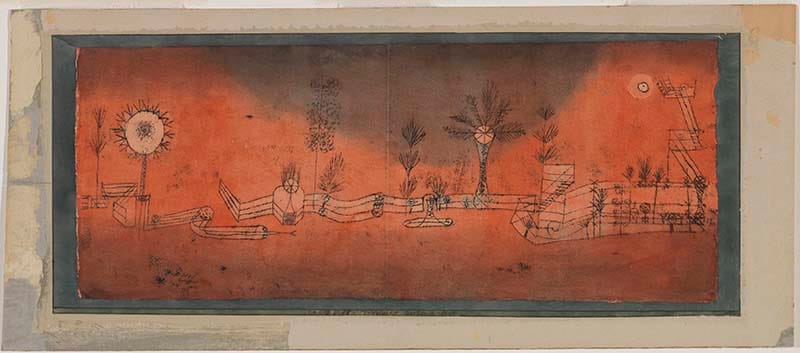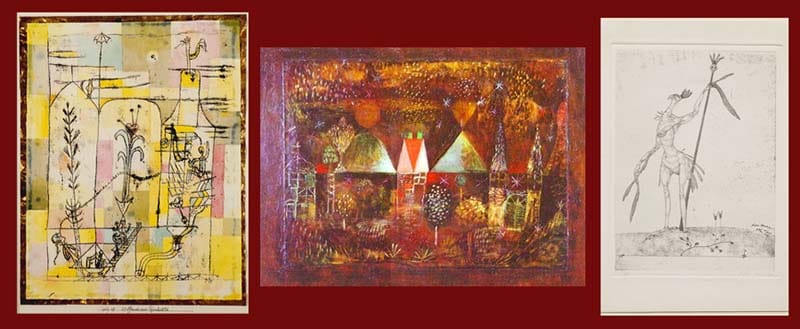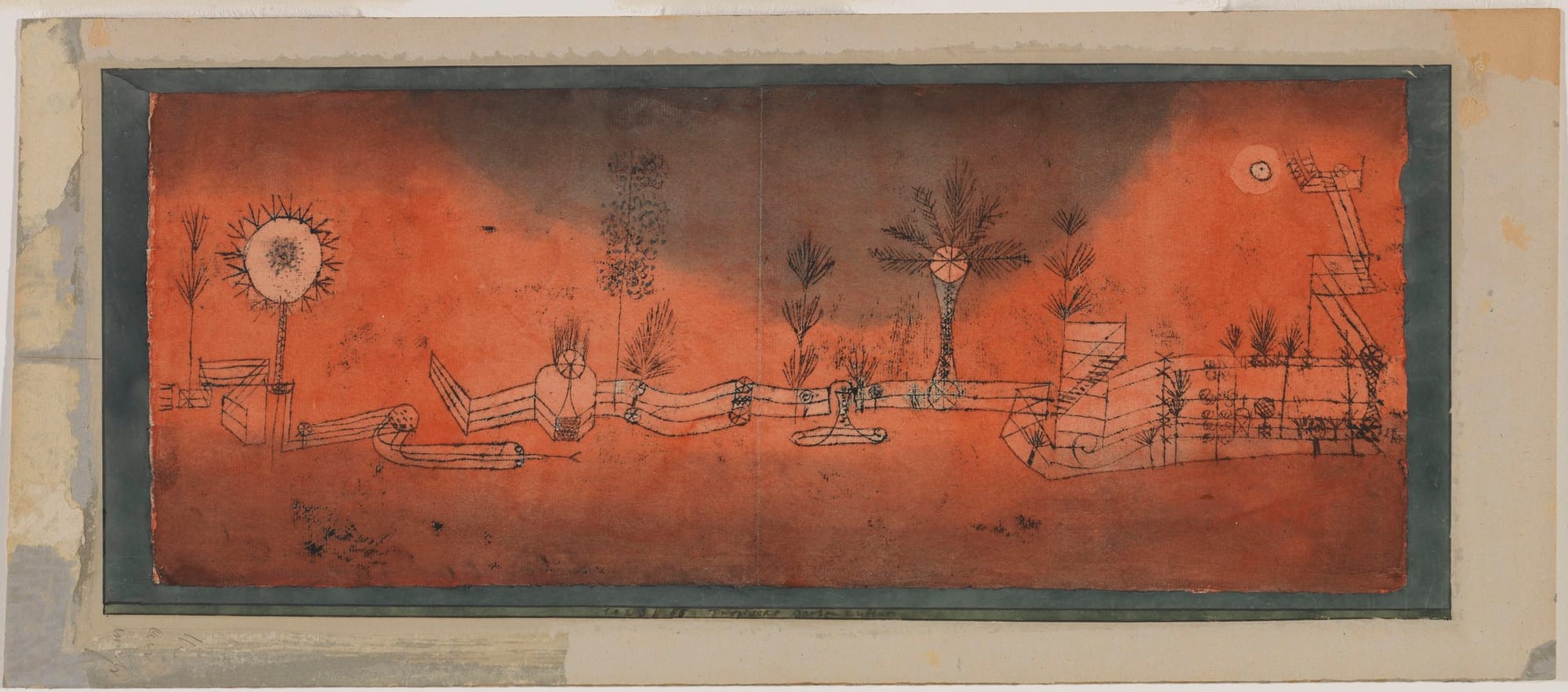Paul Klee, the quirky uncle of the art world!
I love Klee's works and many of them bring a smile to my face with his quirky visual humour leaping out from the canvas.
In line with all the posts we have had of late on gardening I thought you would enjoy one of my favourite Klee paintings titled Tropical Gardening created in 1923 in watercolor and oil transfer drawing on paper.

I decided to ask my AI buddy ChatGPT to come up with a humorous text about Paul Klee and his works. And so below, hopefully for your amusement, I present: Paul Klee, the quirky uncle of the art world!!
Ah, Paul Klee, the quirky uncle of the art world! With his playful palette and whimsical imagination, Klee was like the Picasso of doodles, turning squiggles into masterpieces faster than you could say "abstract expressionism." Born in Switzerland in 1879, Klee had a knack for making art that was as perplexing as it was delightful. His paintings were like visual riddles, leaving viewers scratching their heads in confusion and admiration simultaneously. You couldn't help but wonder if he was secretly laughing at us from behind his canvas, enjoying the chaos he created.
Klee's artistic antics knew no bounds; he was like a kid in a candy store, gleefully experimenting with every medium under the sun. From watercolors to oils to whatever happened to be lying around in his studio, nothing was off-limits to this artistic maverick. And don't even get me started on his sense of humor! His paintings were filled with cheeky winks and sly grins, as if he were in on some cosmic joke that the rest of us were too serious to understand.
But amidst all the laughter and lightheartedness, there was a profound depth to Klee's work that belied his whimsical exterior. His art was like a mirror reflecting the complexities of the human experience, from joy and wonder to melancholy and introspection. Klee may have been a joker, but he was also a sage, reminding us that sometimes the best way to make sense of the world is to embrace its absurdity with a smile. Hats off to you, Paul Klee, for showing us that art doesn't have to be serious to be seriously good!


Learn more about Paul Klee
Click HereCredit
✳️ en.wikipedia.org
